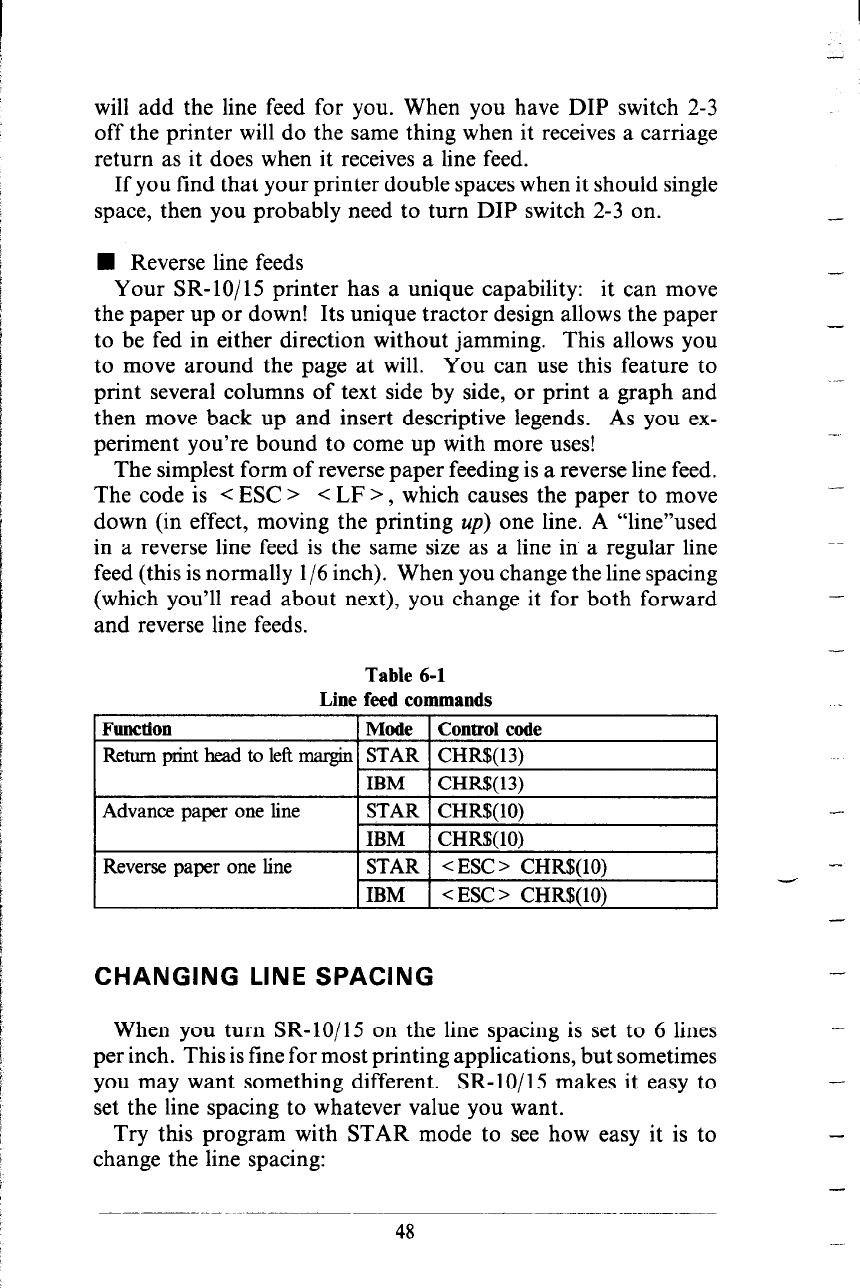
will add the line feed for you. When you have DIP switch 2-3
off the printer will do the same thing when it receives a carriage
return as it does when it receives a line feed.
If you find that your printer double spaces when it should single
space, then you probably need to turn DIP switch 2-3 on.
-
n Reverse line feeds
Your SR-lo/15 printer has a unique capability: it can move
the paper up or down! Its unique tractor design allows the paper
to be fed in either direction without jamming. This allows you
to move around the page at will. You can use this feature to
print several columns of text side by side, or print a graph and
then move back up and insert descriptive legends. As you ex-
periment you’re bound to come up with more uses!
The simplest form of reverse paper feeding is a reverse line feed.
The code is < ESC > < LF > , which causes the paper to move
down (in effect, moving the printing up) one line. A “1ine”used
in a reverse line feed is the same size as a line in a regular line
feed (this is normally l/6 inch). When you change the line spacing
(which you’ll read about next), you change it for both forward
and reverse line feeds.
-
-
._.
-
-
Table 6-l
Line feed commands
-
Function
Mode Control code
Return print head to left margin STAR CHR$(13)
IBM
CHR$(13)
Advance paper one line
STAR CHR$(lO)
IBM
CHR$(lO)
Reverse paper one line
STAR <ESC > CHR!$(lO)
IBM
< ESC > CHR$(lO)
-
CHANGING LINE SPACING
When you turn SR- 10/l 5 on the line spacing is set to 6 lines
per inch. This is fine for most printing applications, but sometimes
you may want something different. SR- 10/l 5 makes it easy to
set the line spacing to whatever value you want.
Try this program with STAR mode to see how easy it is to
change the line spacing:
-
48
